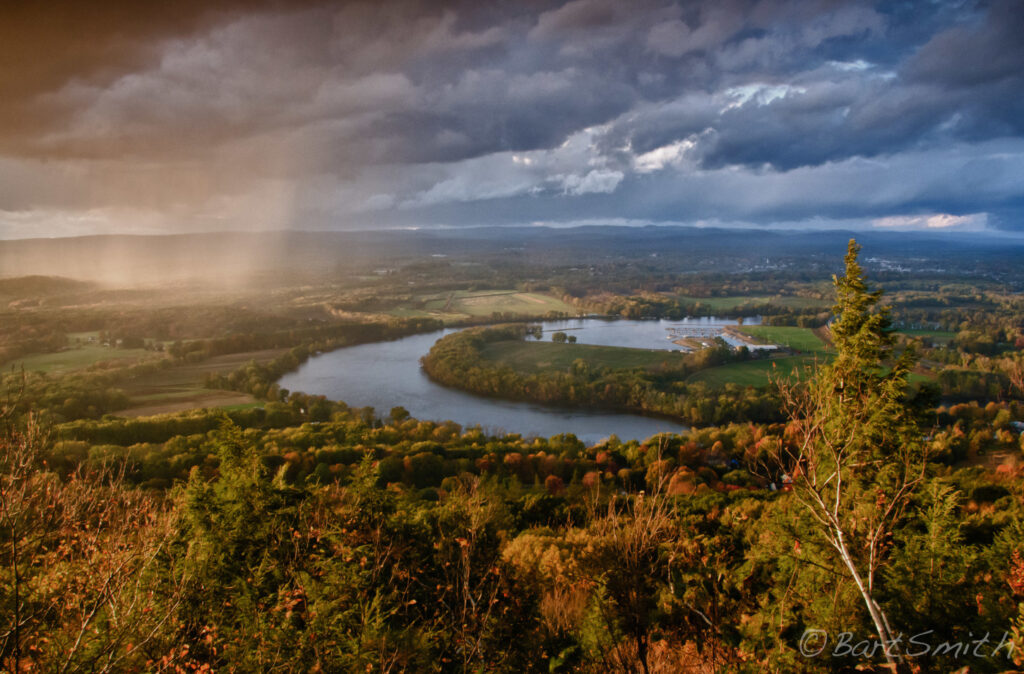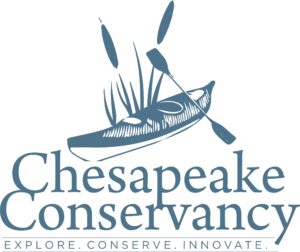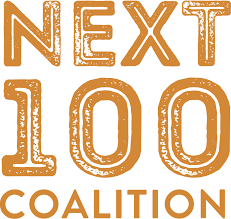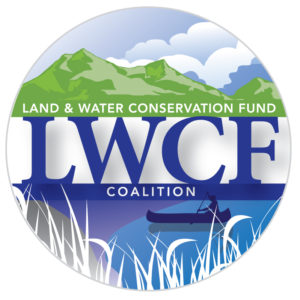National Trails and Public Lands Advocates react to the Biden Administration’s call for conservation.

This oxbow on the Connecticut River was made famous by Hudson Bay painters. Dry Knob along the Monadnock Trail section of the New England Trail. Massachusettes. Courtesy Bart Smith.
On May 6, 2021, a 24-page report called “Conserving and Restoring America the Beautiful” outlined a vision of a locally led, voluntary, nationwide effort to “conserve and restore the lands and waters upon which we all depend, and that bind us together as Americans”. The report was submitted to the National Climate Task Force by the Departments of the Interior, Agriculture and Commerce, the National Oceanic and Atmospheric Administration (NOAA), and the White House’s Council on Environmental Quality to provide initial recommendations on how to advance an inclusive and collaborative conservation vision following President Biden’s Executive Order 14008, “Tackling the Climate Crisis at Home and Abroad.”
A central recommendation of that report was a call to “join together in pursuit of a goal of conserving at least 30 percent of our lands and waters by 2030”. In addition to this call-to-action, the “America the Beautiful” report lays out eight core principles that should be adhered to while pursuing that goal, including “Honor(ing) Tribal Sovereignty and Support(ing) the Priorities of Tribal Nations,” creating jobs and supporting healthy communities, using “Science as a Guide,” and “Honor(ing) Private Property Rights and Support(ing) the Voluntary Stewardship Efforts of Private Landowners”.
What follows are reactions to this report from a few organizations and partners representing a cross-section of National Trails System stakeholders.
“As the nation’s first all-water National Historic Trail, the Captain John Smith Chesapeake National Historic Trail provides a framework to achieve large landscape conservation as it connects national wildlife refuges, national parks and trails, and significant Indigenous sites such as Werowocomoco, a place of Indigenous leadership and ancestral homeland on Virginia’s York River. A national 30 x 30 conservation goal will contribute to the ongoing conservation efforts happening in the Chesapeake Bay watershed, and it will also help to ensure that the Chesapeake Trail, and the associated Indigenous sites and history, will be preserved and recognized for the benefit of this and future generations.”
- Joel Dunn, President and CEO, Chesapeake Conservancy
“These actions are a firm and decisive step toward a healthier environment and improved access to our nation’s special places for all communities and for all people. The America The Beautiful Initiative is a powerful opportunity to begin to address the historic inequities that have existed not only in where accessible green spaces are located—but who they are protected for. Community engagement is an integral part to this goal if it is to be successful. We must let them define what we are building for our collective future from the start, because failure to do this is simply not an option for any of us who wish to see the planet and all of our people thrive in the future.”
- Teresa Ana Martinez, Executive Director, Continental Divide Trail Coalition
“No one will argue with the statement included in the America the Beautiful report, “…[that] nature is essential to the health, well-being, and prosperity of every family and every community in America.” As conversations begin to take place on how best to achieve the lofty goals included in that report, we must remember that language matters.
In working with our private landowners along the National Trails System, the approach to conserving 30% of the land and waters by 2030 may be seen by some as the first step to an implied land-grab.
Some of the concerns that have been expressed include loss of private property; infringement on private property rights (such as forcing landowners to open property for access to trails, hunting, fishing, etc.); and a subversive attempt to take land out of production, resulting in shifting the tax burden to others through higher property taxes or added taxations. The mere mention of “30 x 30” may be met with distrust and the fear of a hidden agenda to control natural resources, economies, and free choice. In some cases, this distrust and fear could lead to fractured relationships with our National Trails landowners.
As we move forward in these discussions, remember that the exuberance felt and expressed by some for the “30 x 30” initiative is not always met with that same attitude. As we develop plans and/or materials we must always remember–language does matter.”
- Joanne VanCovern, Manager, Santa Fe Trail Association
“The Next 100 Coalition applauds the Biden Administration’s efforts to advance equity and access for all communities as part of its ambitious conservation goal to conserve 30 percent of the U.S. lands and oceans by 2030, an inclusive and bold vision for safeguarding America’s lands, water, and wildlife as part of the America The Beautiful Campaign.
President Biden’s call for a “whole of government” approach to advancing racial and social justice for communities of colors across the country extends to the work of the Department of Interior, Department of Agriculture, NOAA, and all other land and ocean management agencies. The principles and areas of focus outlined in the report titled “Conserving and Restoring America The Beautiful” are central to advancing equity in access to all the benefits of conservation for communities of color and demonstrate a commitment by these agencies to answer the President’s call for racial justice and social justice.
Communities of color and other historically marginalized communities are hopeful that this ambitious goal is an opportunity to advance their conservation priorities and an investment into their communities under the Biden Administration to the creation of new parks, jobs, and other opportunities that better serve communities of color, urban communities, Native and Tribal communities and provide equitable access to all the benefits of the outdoors.”
- Statement from the Next 100 Coalition
“The Biden Administration’s America the Beautiful initiative is a first step in implementing ambitious and important goals for climate, conservation and environmental justice, and the report rightly highlights the importance of the Land and Water Conservation Fund (LWCF) to achieving these goals. The successful campaign for full, permanent funding of LWCF shows that conservation is a bipartisan issue that brings people together.
‘The Land and Water Conservation Fund is one of many tools available to communities working with landowners to meet their conservation and outdoor recreation needs,’ said Lesley Kane Szynal, Chair of the LWCF Coalition. ‘We applaud the Administration for bringing together a coalition of stakeholders including local community voices, Tribes, businesses, conservation and recreation groups, environmental justice advocates, and many others for this critically important conservation effort. While LWCF has touched nearly every community in America, we know that there is so much more to do to address the impacts of climate change, keep forests as forests, protect water, wildlife, and our way of life. We look forward to working with the Biden Administration in their efforts to meet the promise of its conservation initiative,” said Kane Synzal.
- Statement from the LWCF Coalition
Read “Conserving and Restoring America the Beautiful” in full here.
Find more statements on the America the Beautiful Report here.
Find content to help dispel misinformation about the report here.




